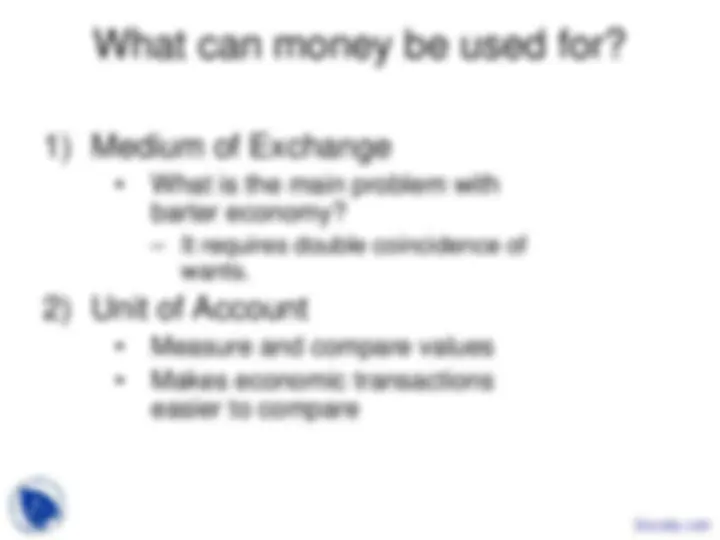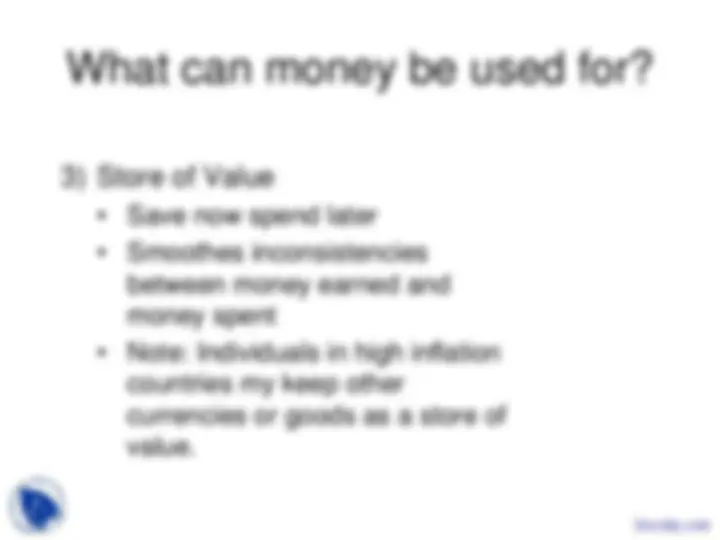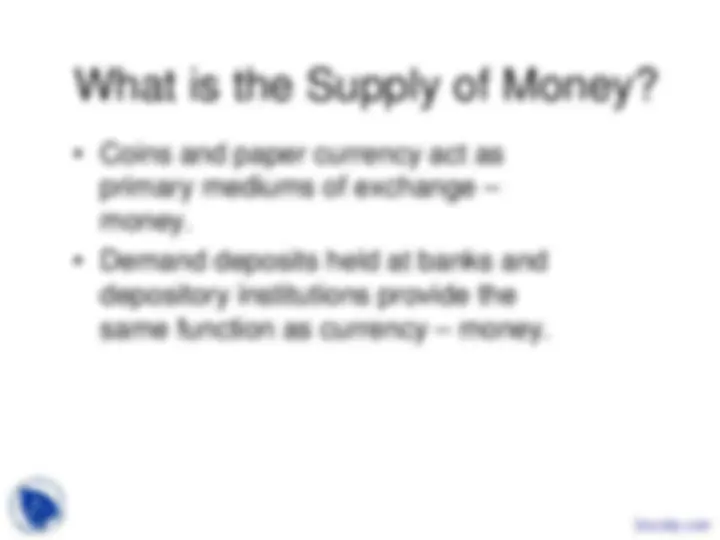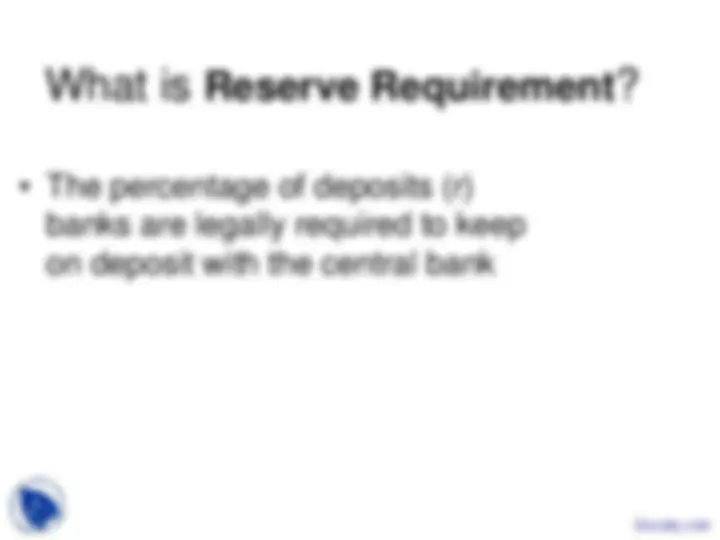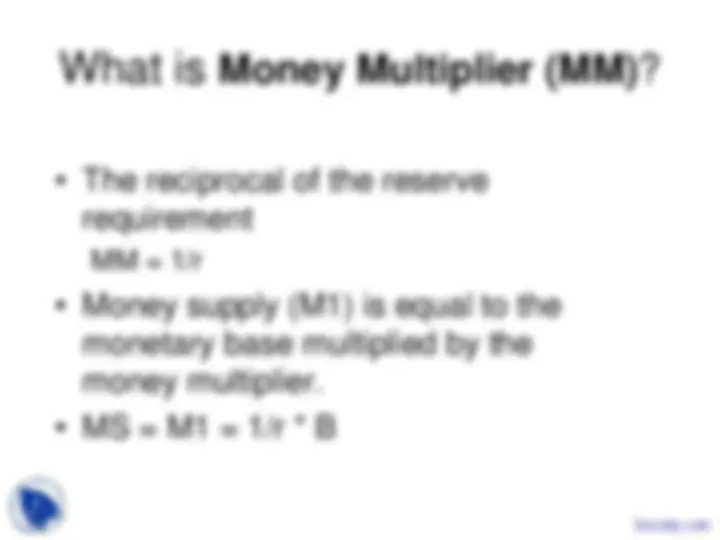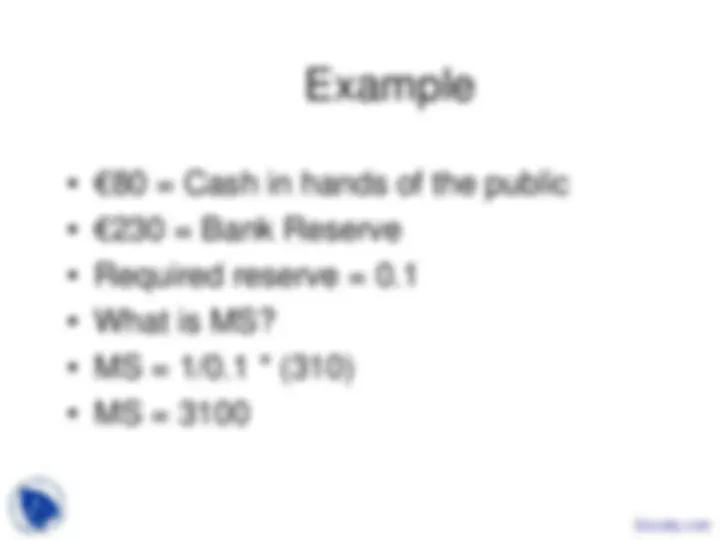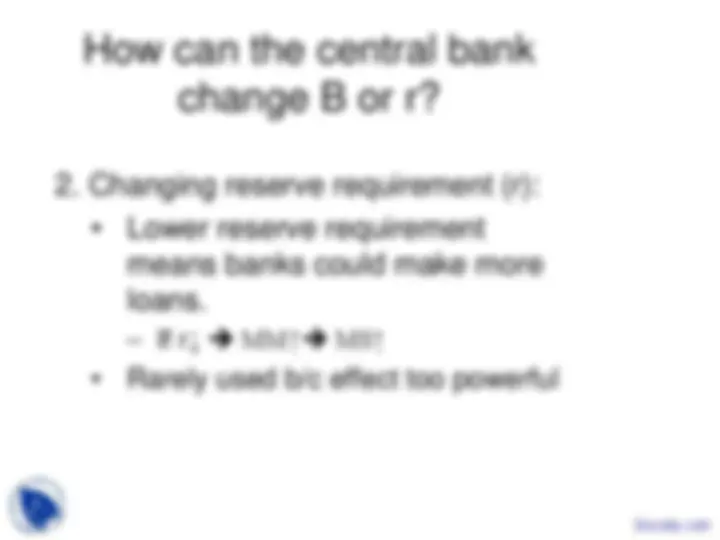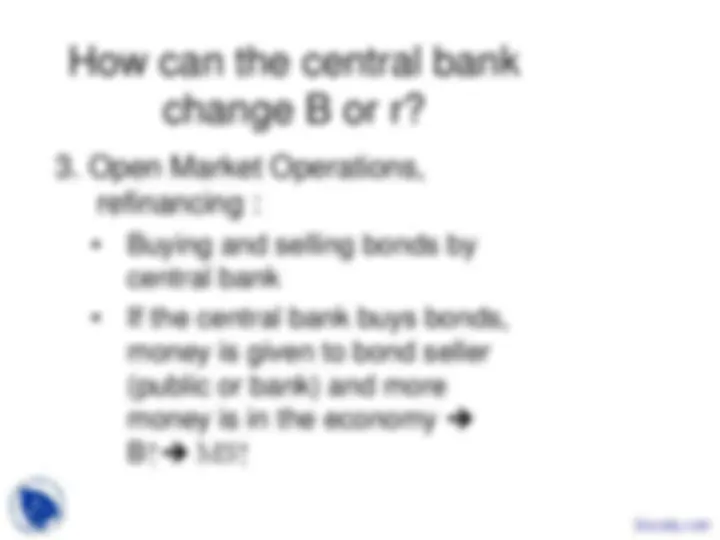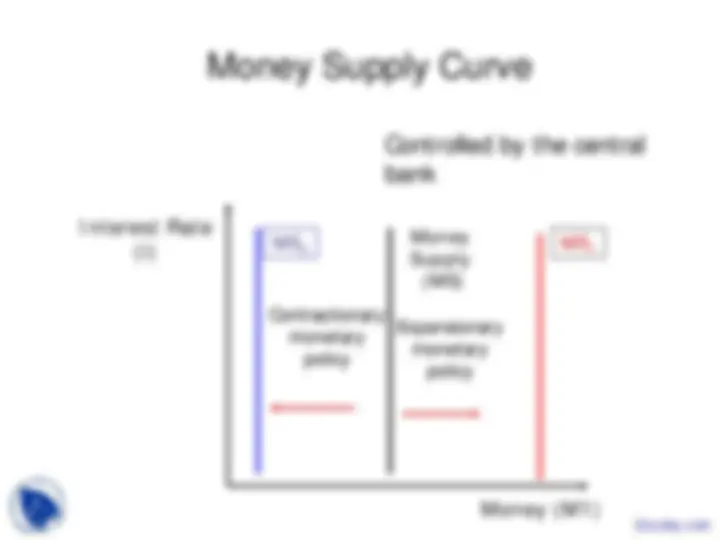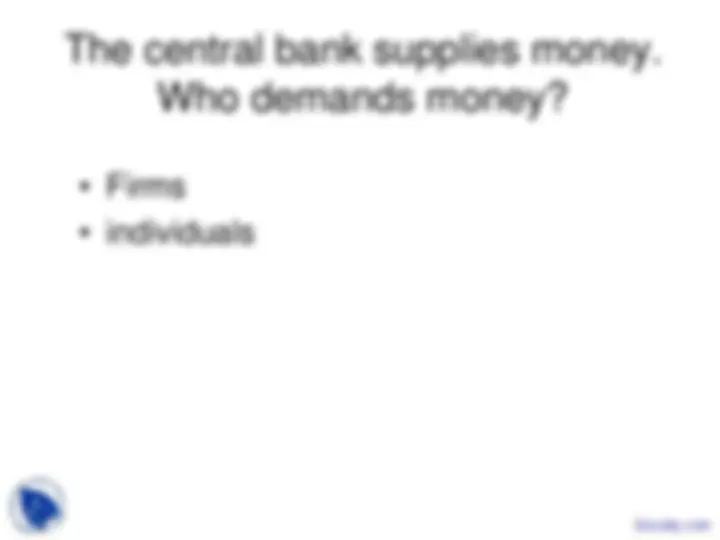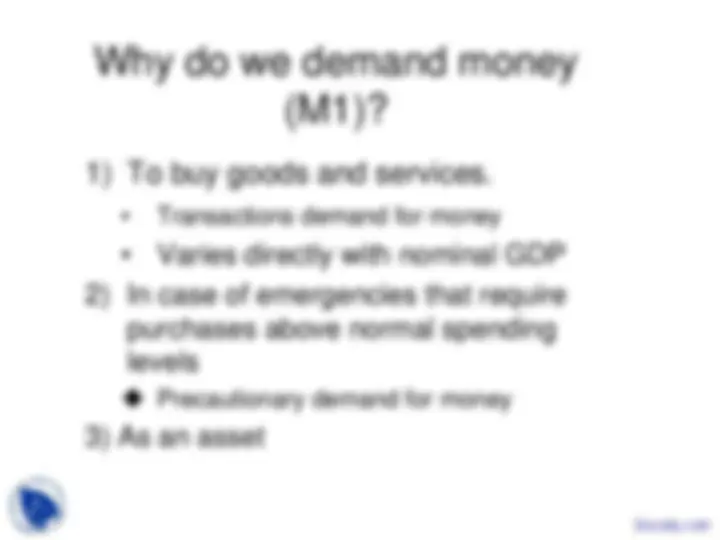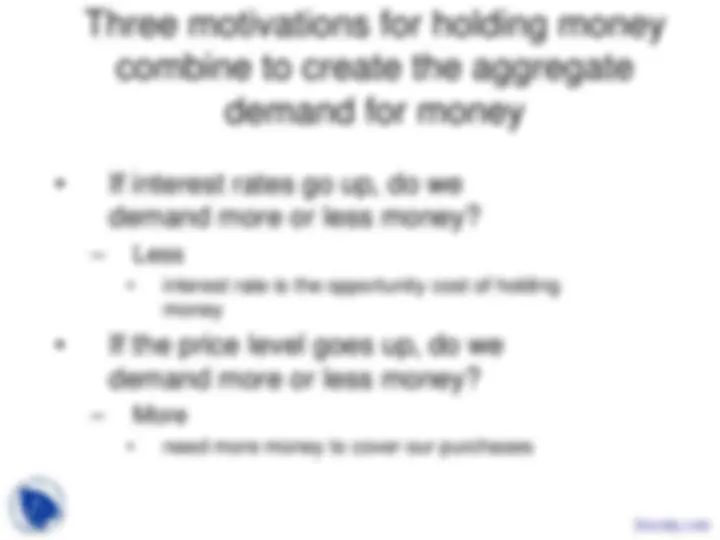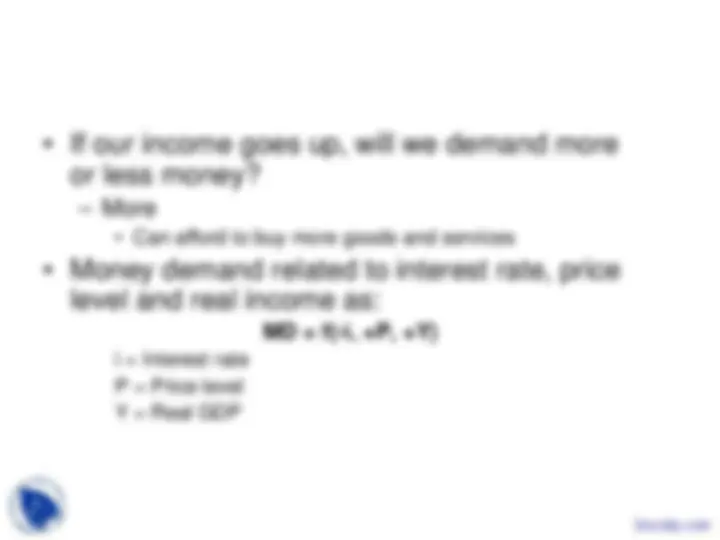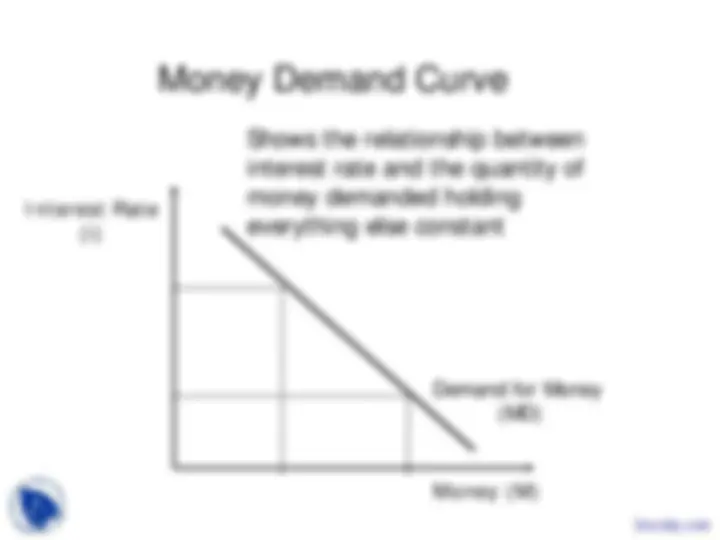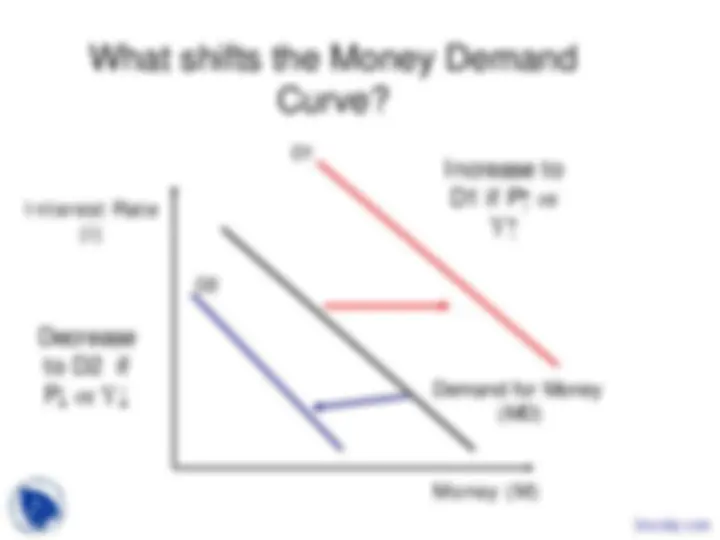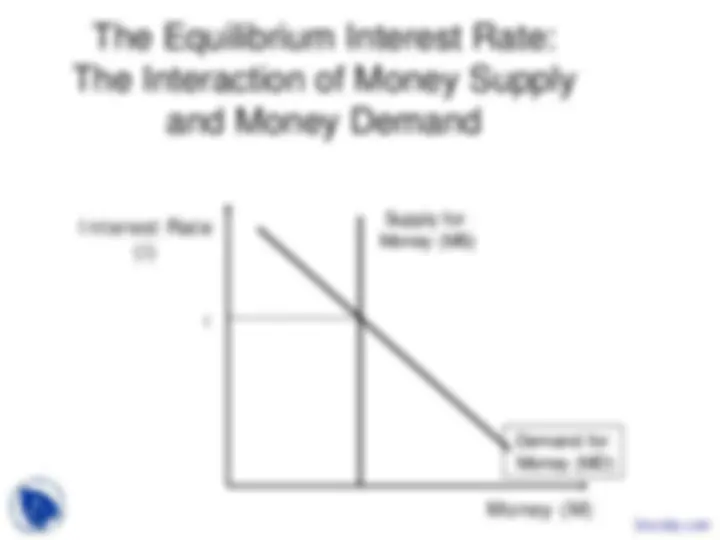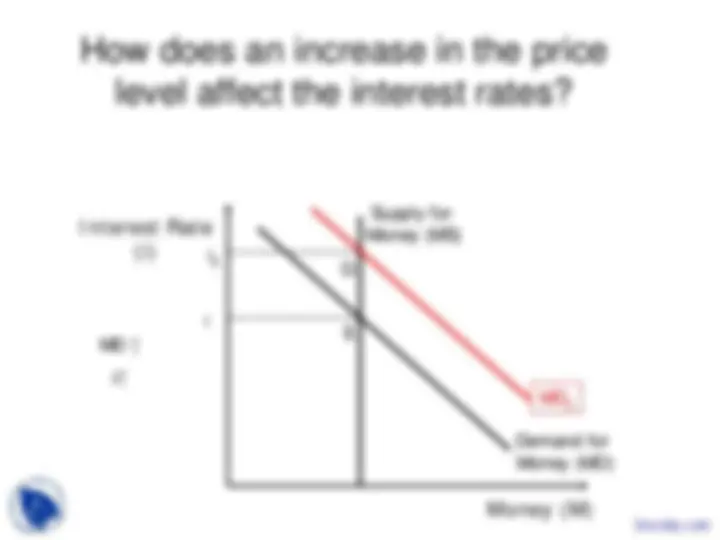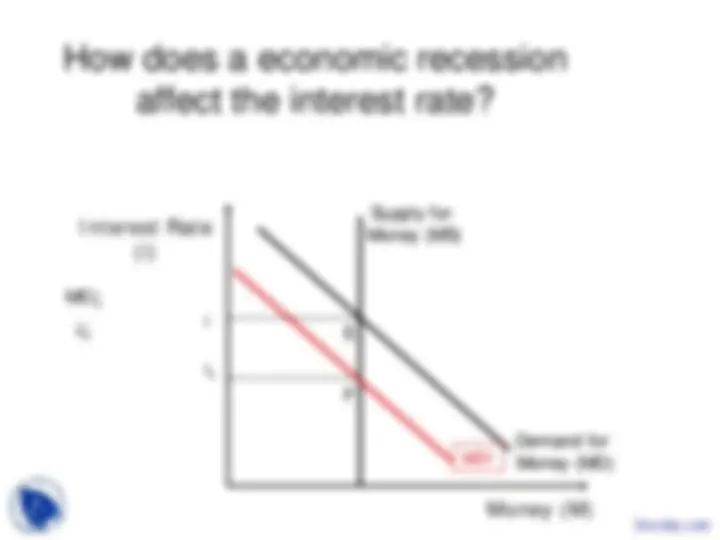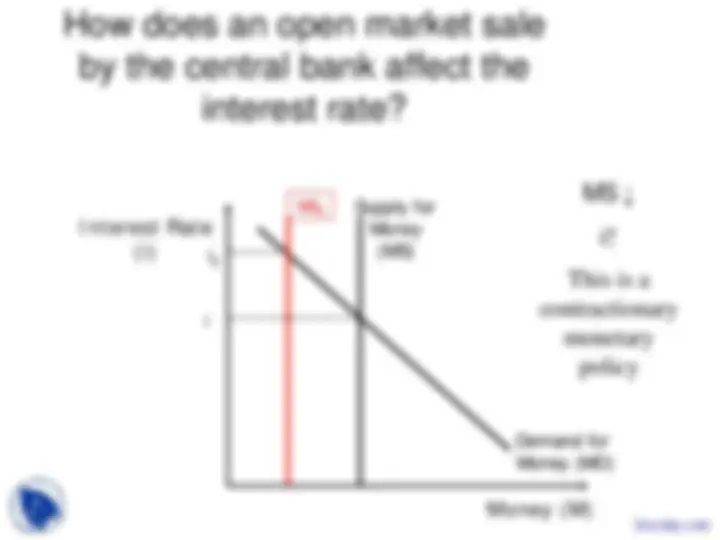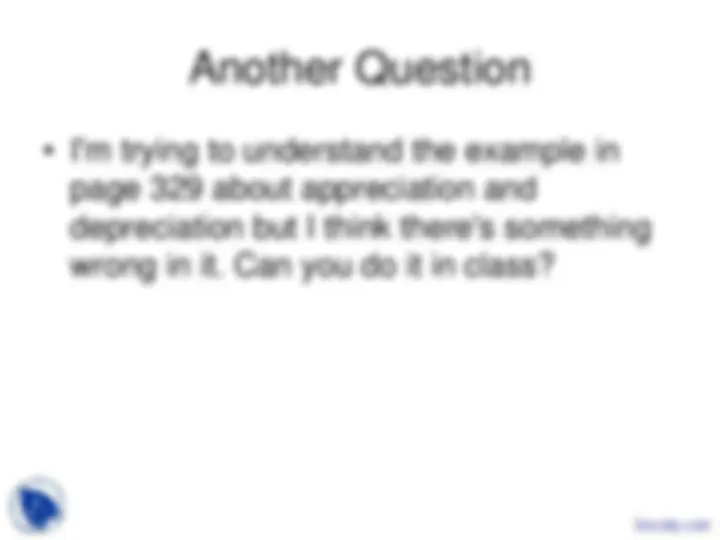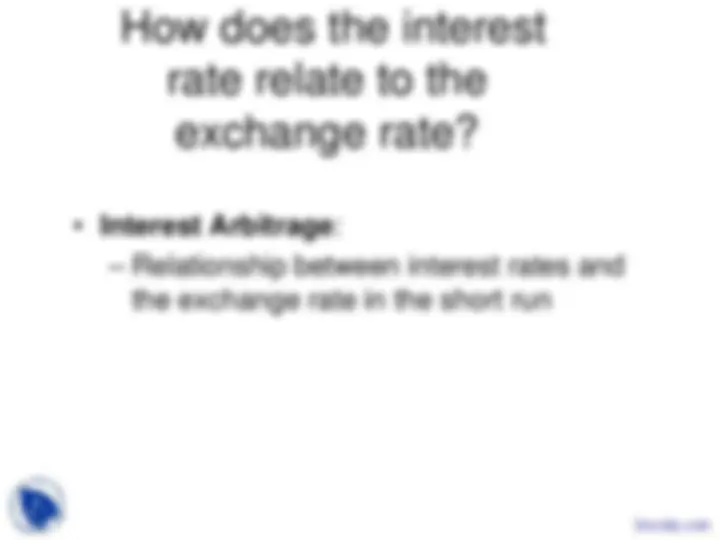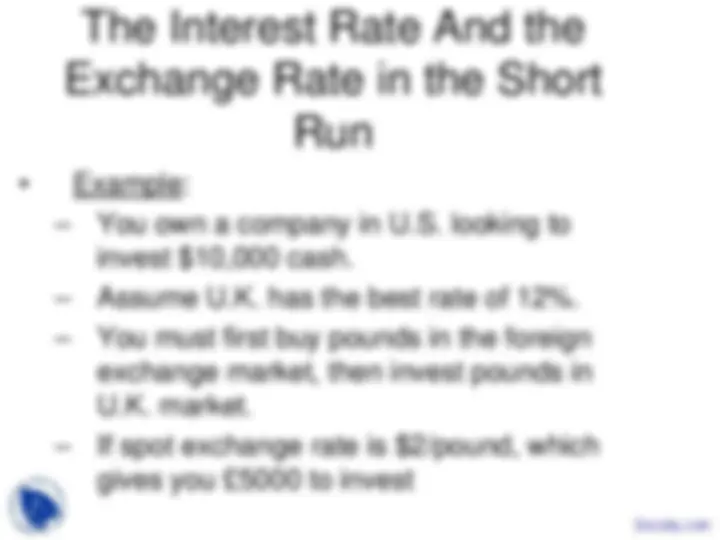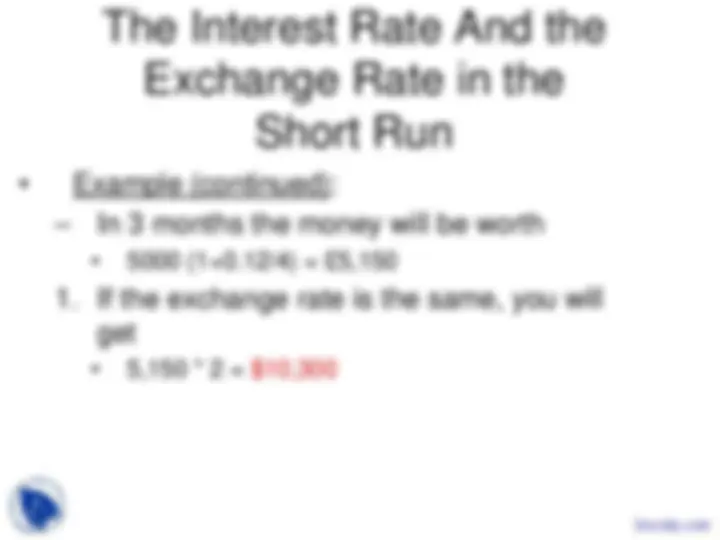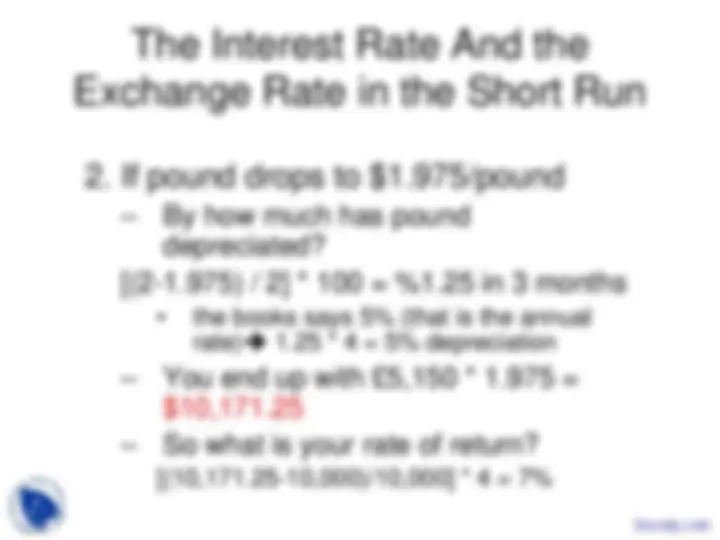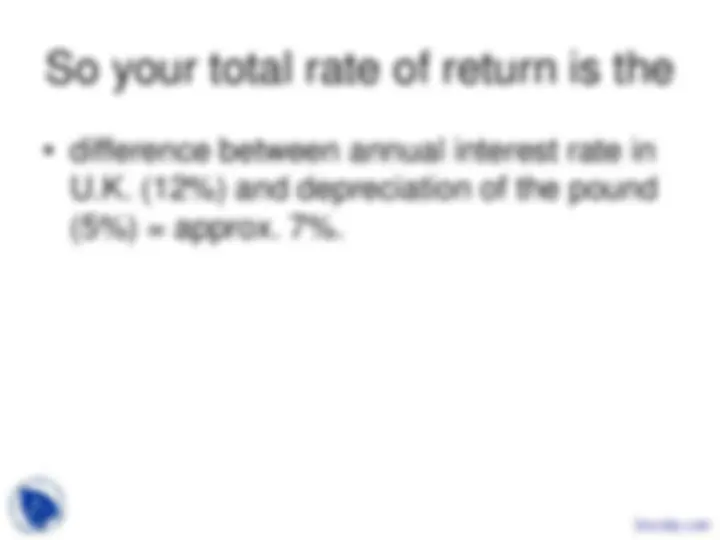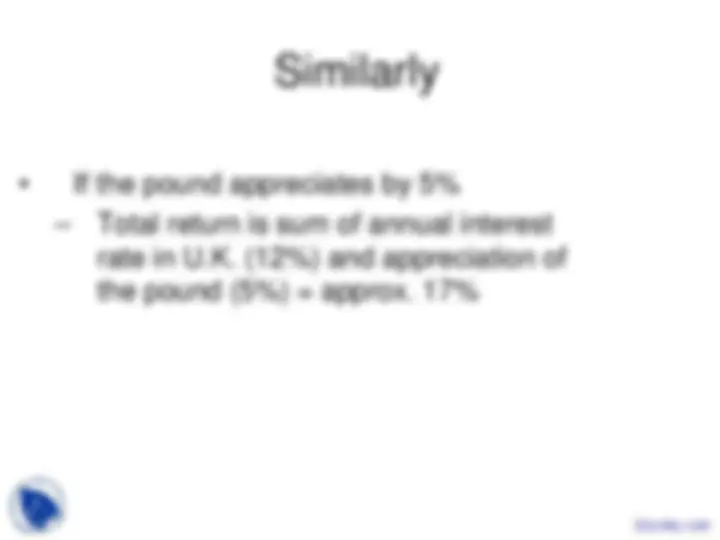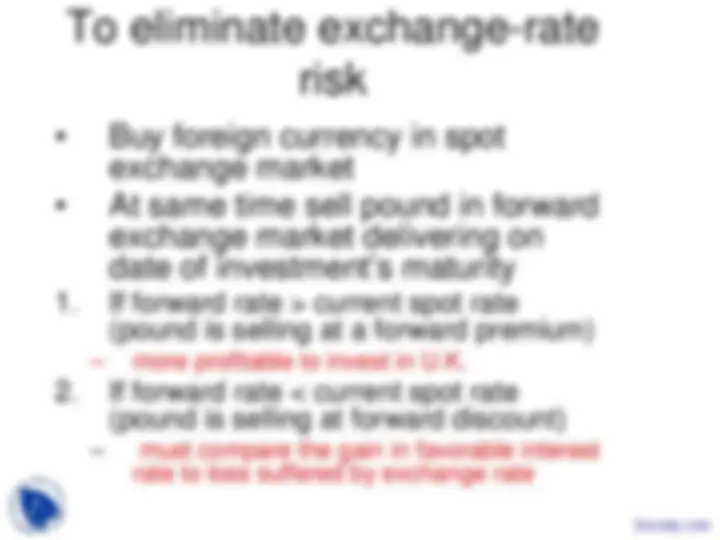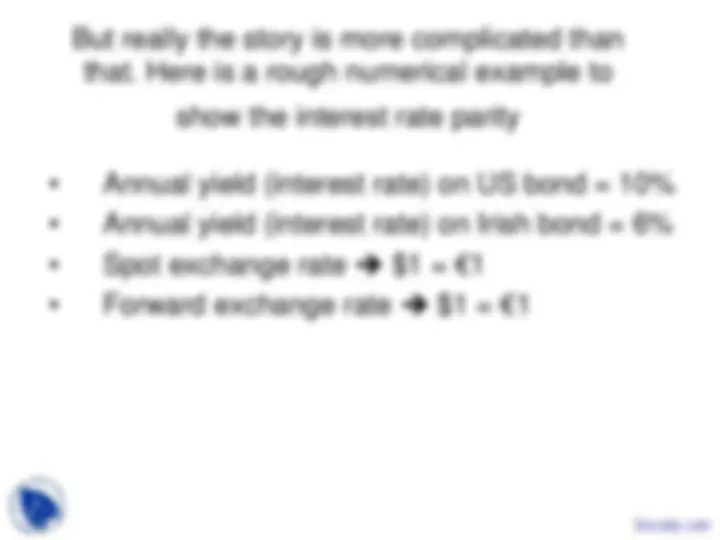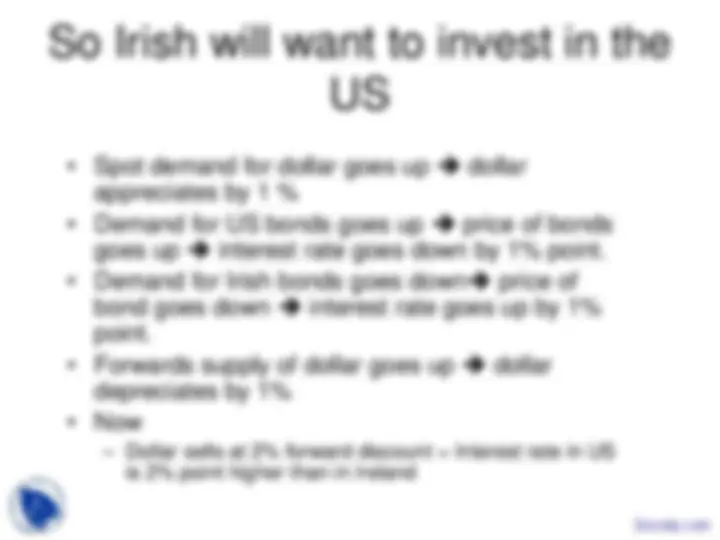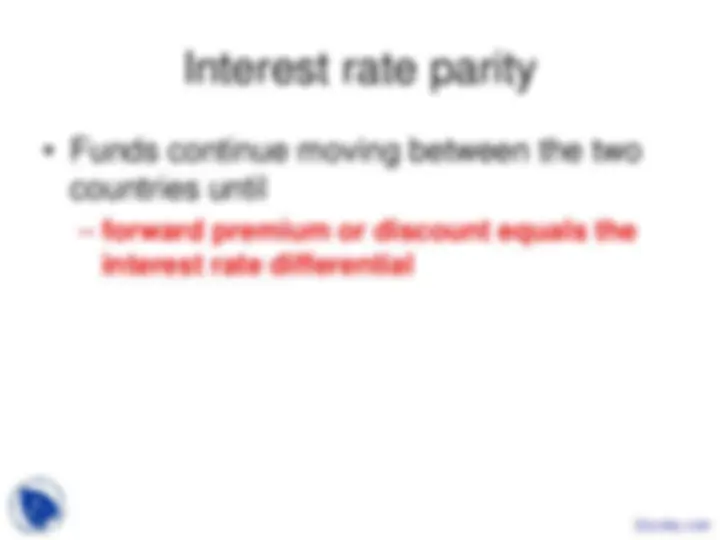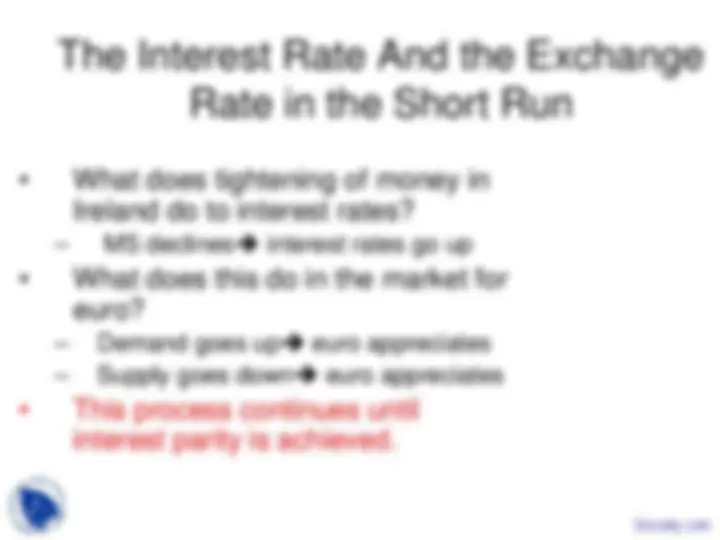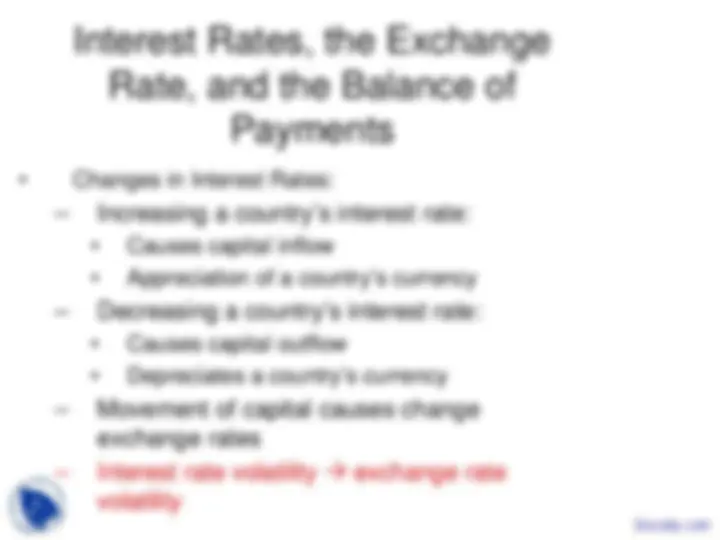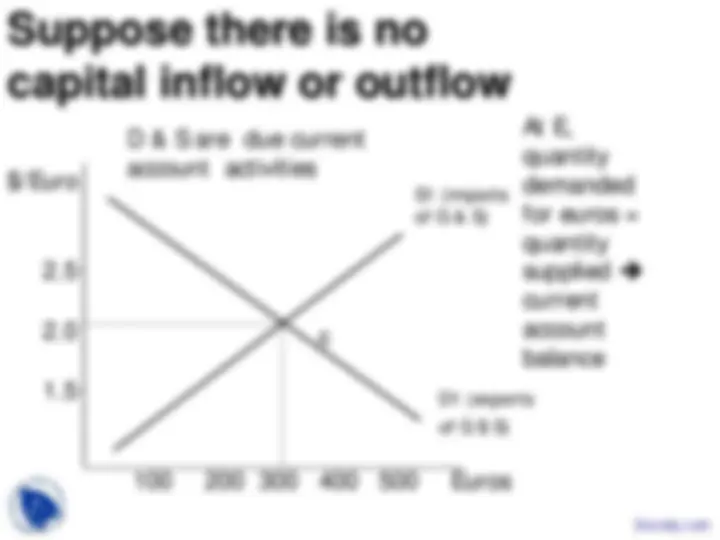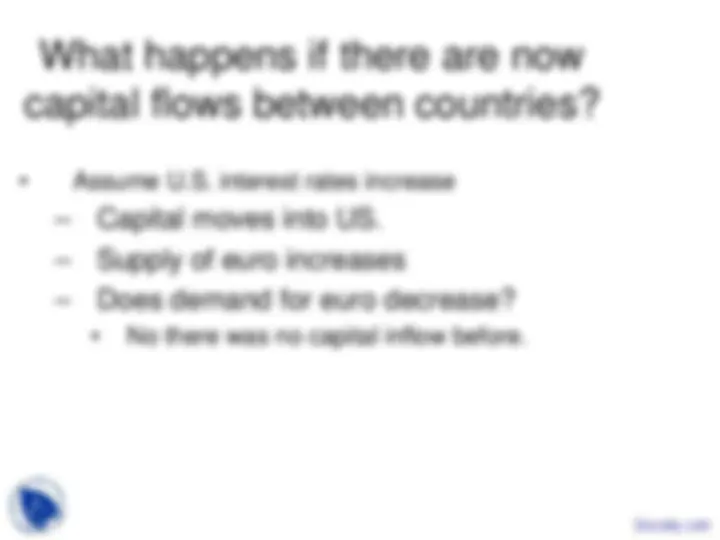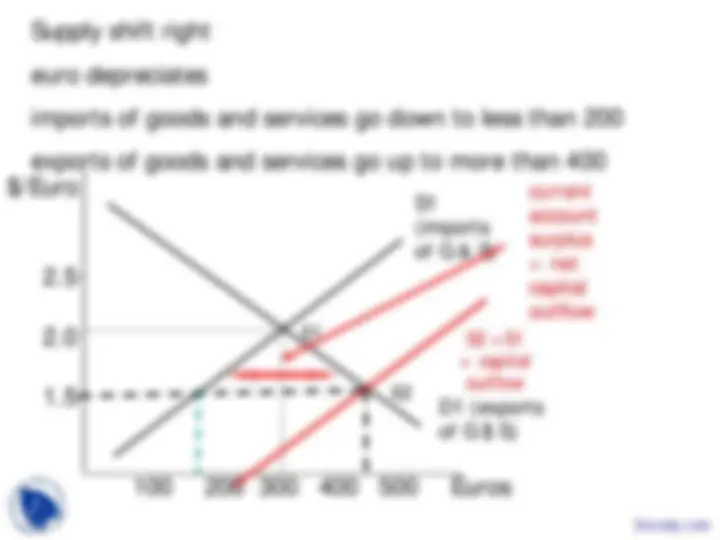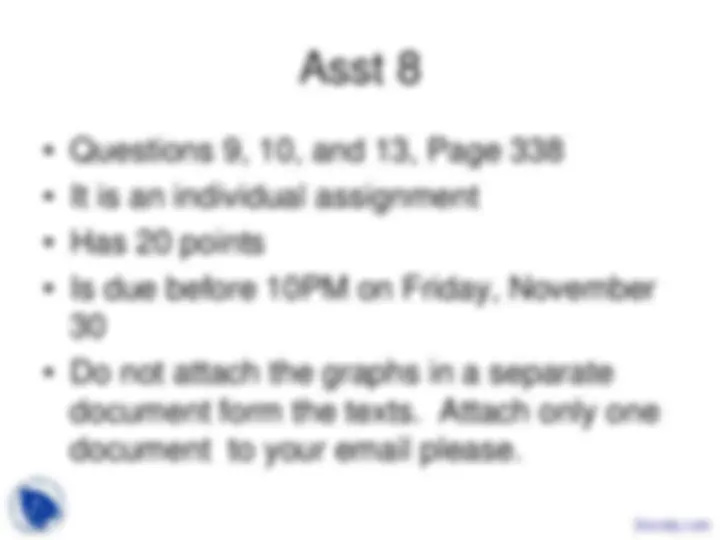Download Understanding Money, Interest Rates, and Exchange Rates: A Comprehensive Guide and more Slides Economics in PDF only on Docsity!
Money, Interest
Rates, and the
Exchange Rate
CHAPTER 14
- Anything that can be used for final discharge a debt.
- Credit card is not money
- Balance in checking account is money
- Coins and currency are money
What is money?
- Store of Value
- Save now spend later
- Smoothes inconsistencies between money earned and money spent
- Note: Individuals in high inflation countries my keep other currencies or goods as a store of value.
What can money be used for?
- Coins and paper currency act as primary mediums of exchange – money.
- Demand deposits held at banks and depository institutions provide the same function as currency – money.
What is the Supply of Money?
What is Monetary Base
(B)?
- Cash held by the public (C) and the total quantity of bank reserves (R) on deposit at central bank
B = C + R
- The percentage of deposits (r) banks are legally required to keep on deposit with the central bank
What is Reserve Requirement?
Example
- €80 = Cash in hands of the public
- €230 = Bank Reserve
- Required reserve = 0.
- What is MS?
- MS = 1/0.1 * (310)
- MS = 3100
Monetary policy
Refers to central bank changing money supply by changing the monetary base and/or the money multiplier.
- MS = M1 = 1/r * B MS↑ if B↑ or if r↓
- Changing reserve requirement (r):
- Lower reserve requirement means banks could make more loans.
- Rarely used b/c effect too powerful
How can the central bank
change B or r?
- Open Market Operations, refinancing :
- Buying and selling bonds by central bank
- If the central bank buys bonds, money is given to bond seller (public or bank) and more money is in the economy B↑ MS↑
How can the central bank
change B or r?
I received a question
- Can you please explain again with some examples the open market operations? thank you
Answer
- Bank of Ireland has some government bonds.
- If the central bank wants to increase the supply of money - Offer higher than normal prices for bonds - Bank of Ireland sell their €1000 bond to the central bank - Central bank makes a €1000 deposit into their Bank of Ireland Reserve Account at the central bank. - Bank of Ireland’s reserves goes up Bank of Ireland make more loans that means the people (borrowers) will have more money in their checking accounts (borrowed) M goes up MS goes up
- To buy goods and services.
- Transactions demand for money
- Varies directly with nominal GDP
- In case of emergencies that require purchases above normal spending levels Precautionary demand for money
- As an asset
Why do we demand money
(M1)?
- If interest rates go up, do we demand more or less money?
- Less
- interest rate is the opportunity cost of holding money
- If the price level goes up, do we demand more or less money?
- More
- need more money to cover our purchases
Three motivations for holding money combine to create the aggregate demand for money

